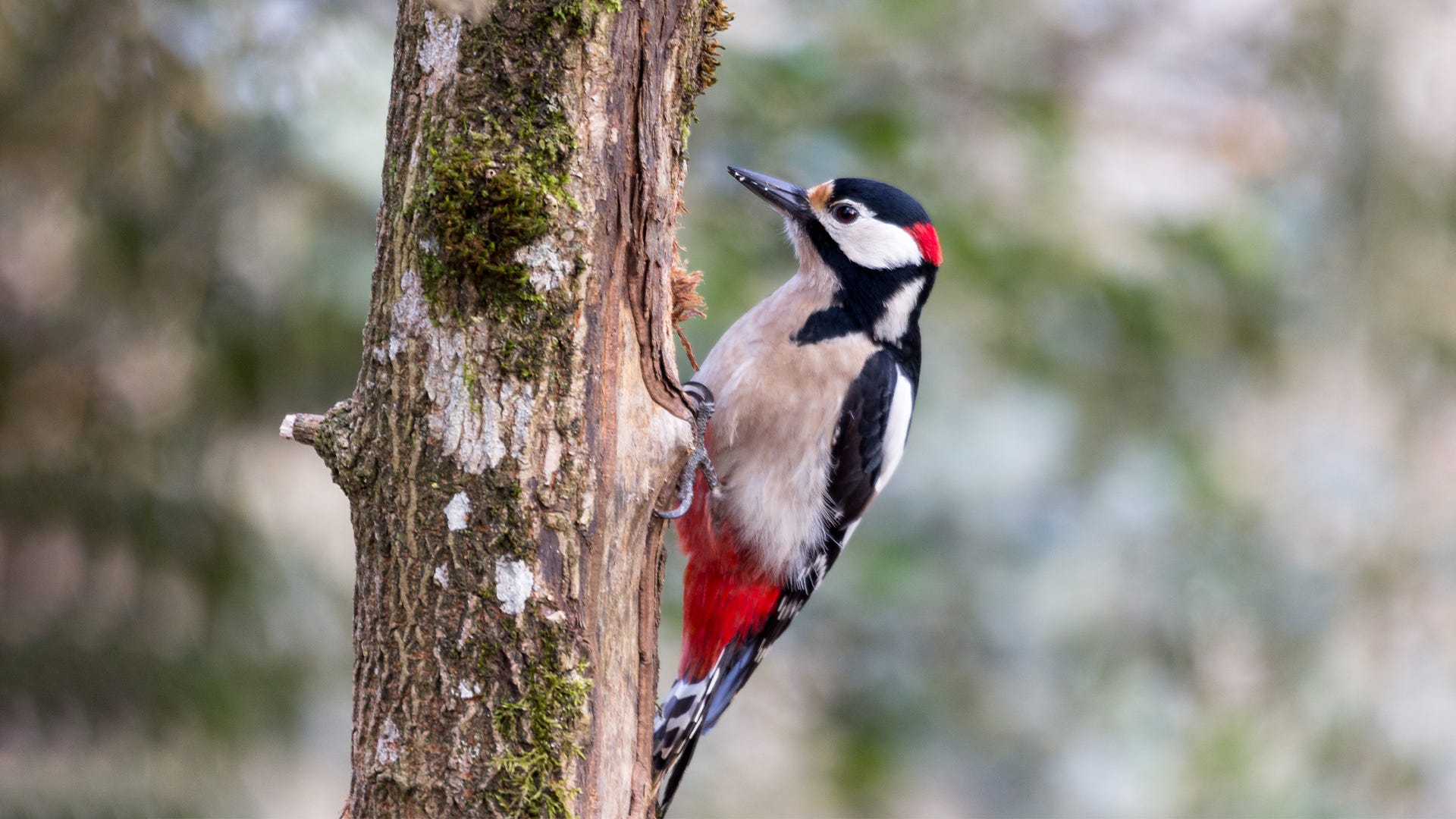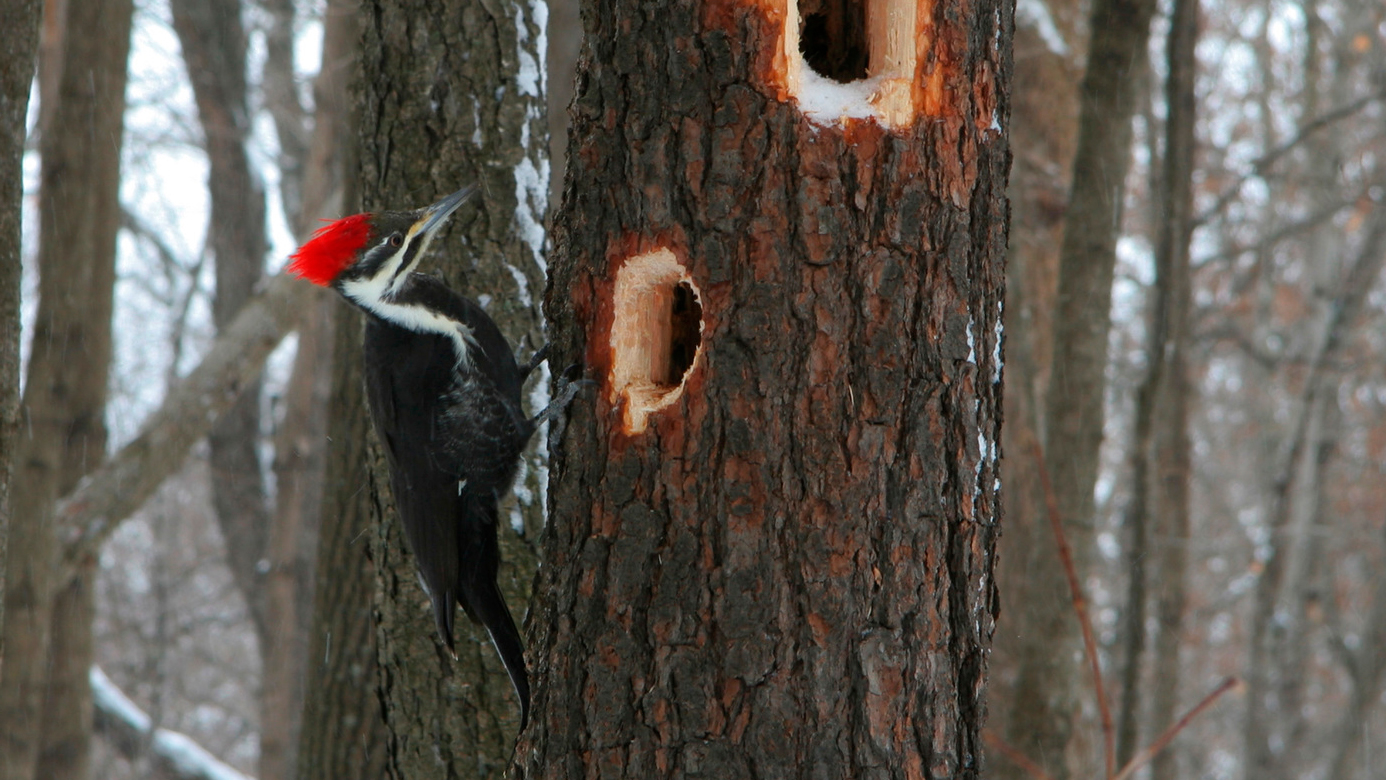Encountering Woodpeckers in Florida Variety: Environments and Actions
Encountering Woodpeckers in Florida Variety: Environments and Actions
Blog Article
Woodpeckers Unleashed: Checking Out the Wonders of These Skilled Tree Mountain Climbers
Woodpeckers, with their distinct markings and rhythmic drumming resembling with wooded locations, hold a special area in the bird world. Their specialized anatomy and adaptations enable them to browse vertical surface areas with unparalleled skill. However, their proficiency of tree climbing is simply one aspect of their fascinating actions. As we dig into the detailed information of woodpeckers' nesting practices, feeding strategies, and the ongoing preservation efforts to protect these remarkable birds, a much deeper recognition for their area in nature unfolds.
Composition and Adaptations
When examining the anatomy and adjustments of woodpeckers, one can observe impressive functions that enable these birds to prosper in their specialized environmental niche. Woodpeckers are furnished with a suite of unique anatomical qualities that aid them in their woodpecking behavior. Among one of the most famous attributes is their solid, chisel-like beak, which is specialized for exploration into timber to uncover pests or develop nesting cavities. This beak is supported by strong neck muscles and an extremely developed skull structure that functions as a shock absorber, permitting woodpeckers to continuously eat trees without creating mind injury. Furthermore, woodpeckers have zygodactyl feet, with two toes dealing with onward and two encountering in reverse, giving a company grasp on tree trunks while they look for food or drum for interaction.
In addition, woodpeckers have an unique tongue framework that is long, barbed, and sticky, enabling them to draw out bugs from crevices in timber. This specific adaptation permits woodpeckers to manipulate a food source that is inaccessible to several various other bird species. Overall, the anatomy and adjustments of woodpeckers showcase the impressive evolutionary solutions that have actually permitted these birds to flourish in their arboreal environment.
Drumming Habits
Having checked out the makeup and adjustments of woodpeckers, the emphasis currently moves to understanding their drumming behavior, a distinctive facet of their interaction and territorial screens. Drumming is a vital type of communication among woodpeckers, serving multiple purposes such as establishing regions, attracting mates, and signaling alarm. Each woodpecker species has an one-of-a-kind drumming pattern that assists people recognize participants of their own species and differentiate them from competitors or predators.
Woodpeckers produce drumming noises by rapidly pecking on resonant surface areas such as dead trees, energy poles, and even metal objects, creating a collection of rhythmic beats. The strength and speed of drumming can vary based on the purpose; for circumstances, a quick drumming series may symbolize aggressiveness in the direction of trespassers, while a slower and softer drumming pattern can indicate courtship (Woodpeckers in Florida). In addition, woodpeckers might change the frequency and period of their drumming to share details messages efficiently
Nesting Routines
Exploring the nesting habits of woodpeckers discloses remarkable understandings into their reproductive behaviors and environment selections. Woodpeckers are understood for their unique nesting preferences, usually excavating cavities in trees to create sheltered spaces for elevating their young. These tooth cavities offer not just as a nesting site but also as a secure haven from predators and severe weather condition.
Woodpeckers show a high level of integrity to their nesting websites, usually going back to the exact same area year after year. This actions highlights the importance click for more of ideal habitat availability for their reproductive success. The option of a nesting website is crucial for woodpeckers, with elements such as tree types, elevation, and decay stage playing significant duties in their decision-making procedure.
Interestingly, some woodpecker species are recognized to excavate several cavities within their area, supplying themselves with alternative nesting choices. This strategy might function as a type of insurance coverage against potential threats or disturbances to their main nesting site.

Feeding Techniques
Woodpeckers employ a range of specialized feeding techniques to procure their main food resources. Among the most unique feeding actions of woodpeckers is drumming, which involves fast pecking on trees to uncover bugs underneath the bark. This drumming not only helps find out here now them locate victim yet also works as a means of interaction with various other woodpeckers. Woodpeckers have solid, chisel-like beaks that enable them to pierce into timber easily. When an opening is created, they use their lengthy, barbed tongues to remove pests such as ants, beetles, larvae, and crawlers. These tongues are covered with sticky saliva that helps catch the prey. Woodpeckers are additionally understood to dig deep into tooth cavities in trees to gain access to hidden insect larvae or sap. Some varieties, like the acorn woodpecker, shop nuts in specifically created openings called granaries. This critical storing of food assists them endure during food deficiency durations. Woodpeckers are truly amazing in their feeding techniques, showcasing adaptability and intelligence in acquiring their nourishment.
Conservation Efforts
Among the detailed feeding strategies showed by woodpeckers, the conservation initiatives targeted at anonymous protecting these fascinating birds play a crucial role in maintaining their habitats and populations. Woodpeckers deal with various hazards to their survival, consisting of environment loss because of deforestation, environment change altering their communities, and crashes with man-made frameworks such as buildings and vehicles - Woodpeckers in Florida. Guardians are proactively working to attend to these challenges and guarantee the long-term well-being of woodpecker varieties

Education and learning and public recognition campaigns are also crucial components of woodpecker preservation efforts. By increasing understanding concerning the value of these birds in maintaining healthy and balanced forest communities, preservationists can garner support for habitat conservation efforts and promote liable land monitoring techniques. Via collaborative initiatives between scientists, policymakers, and local neighborhoods, we can collaborate to secure a future where woodpeckers prosper in their natural habitats.
Conclusion

Report this page